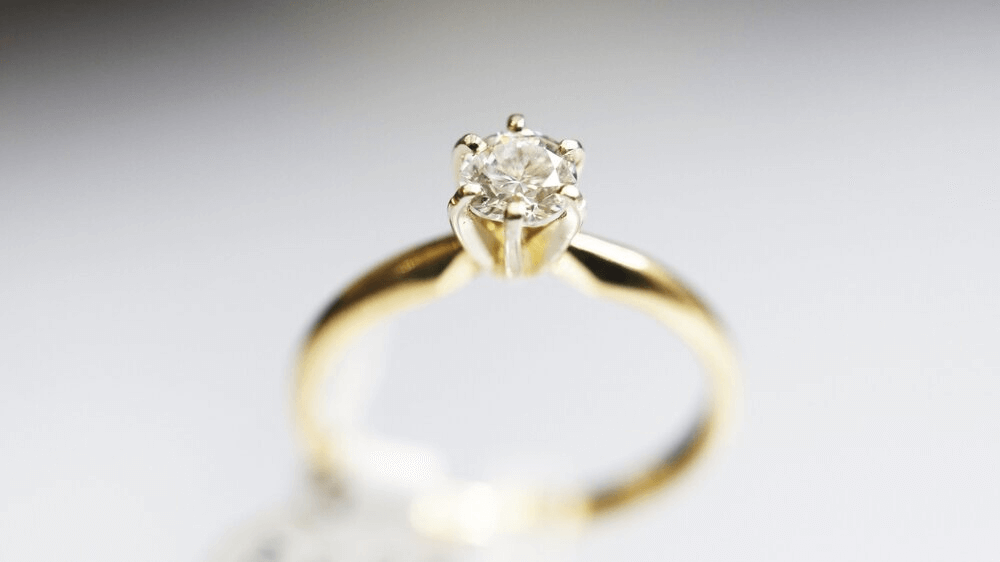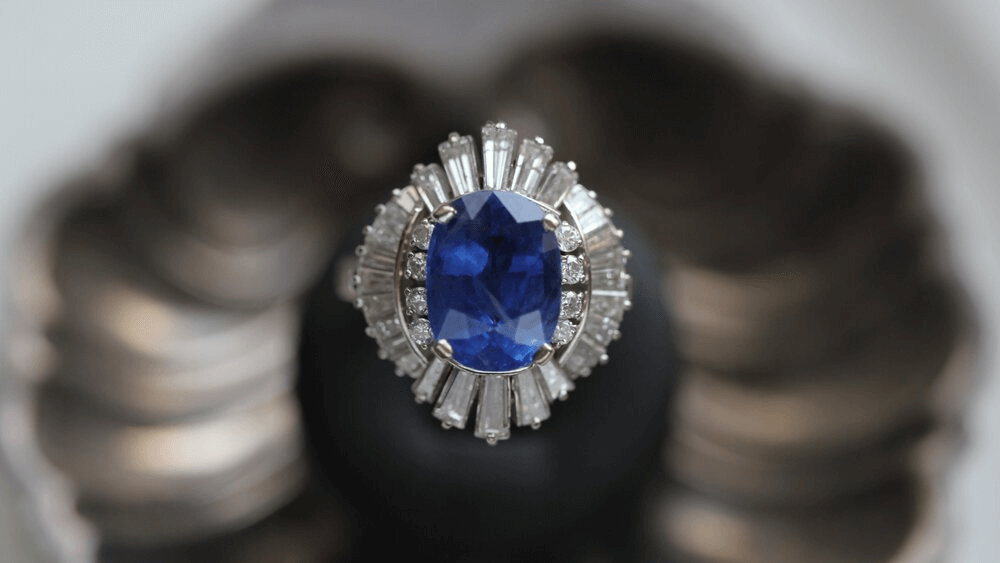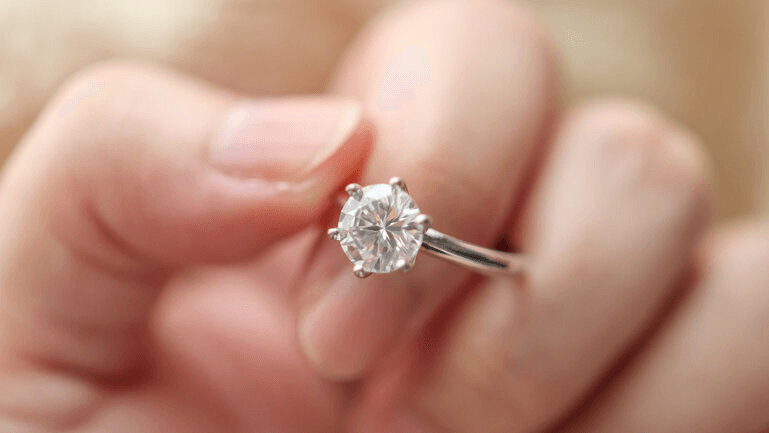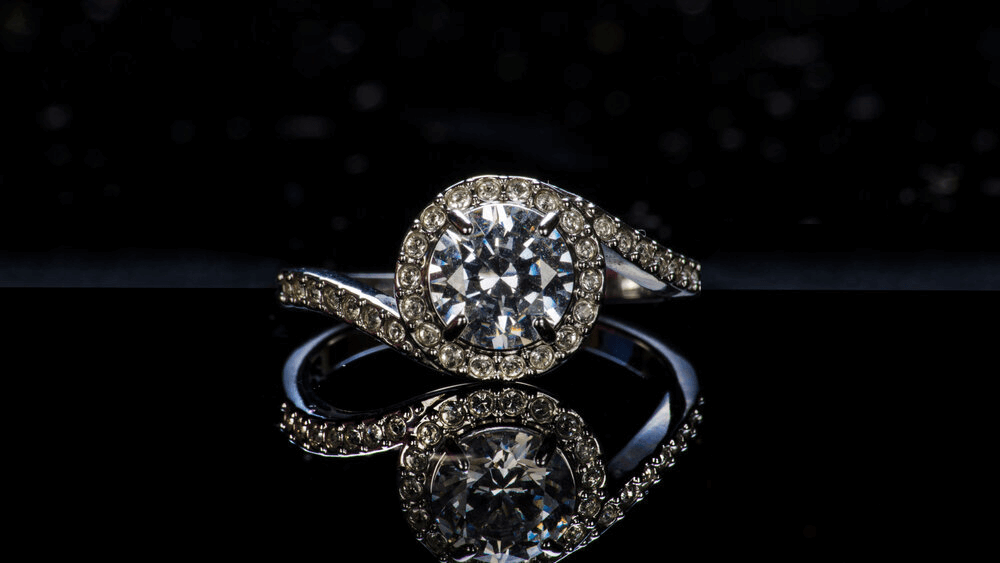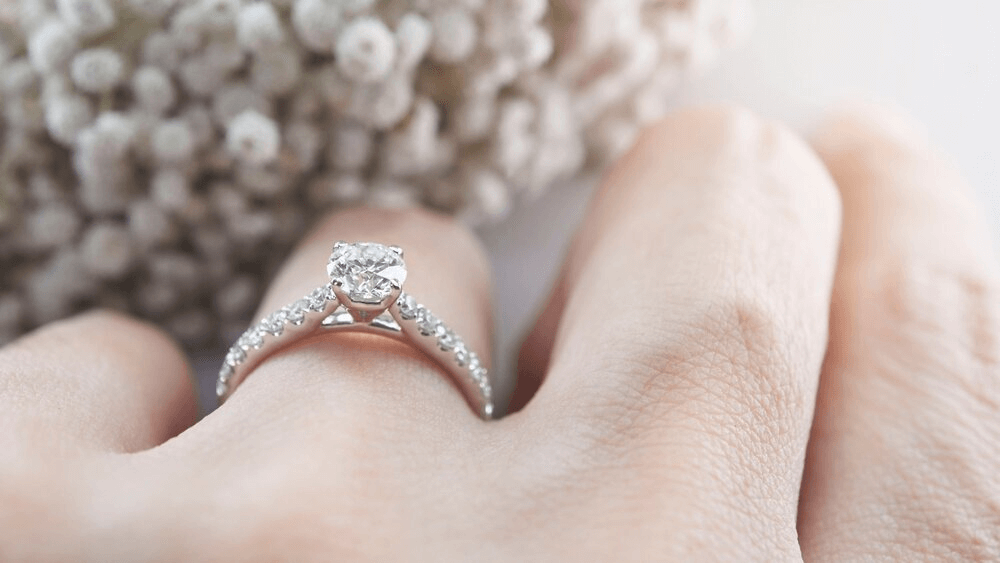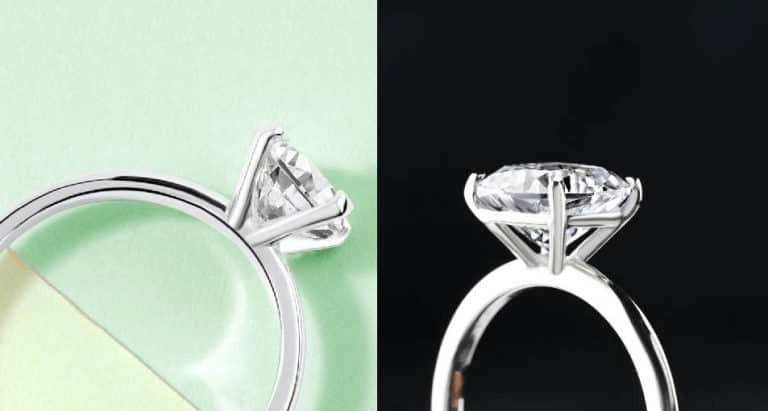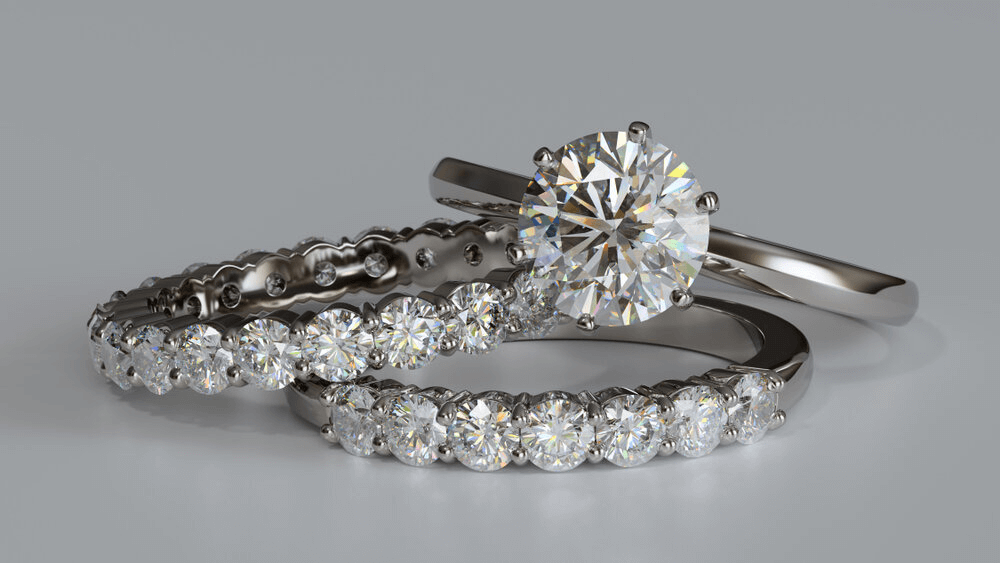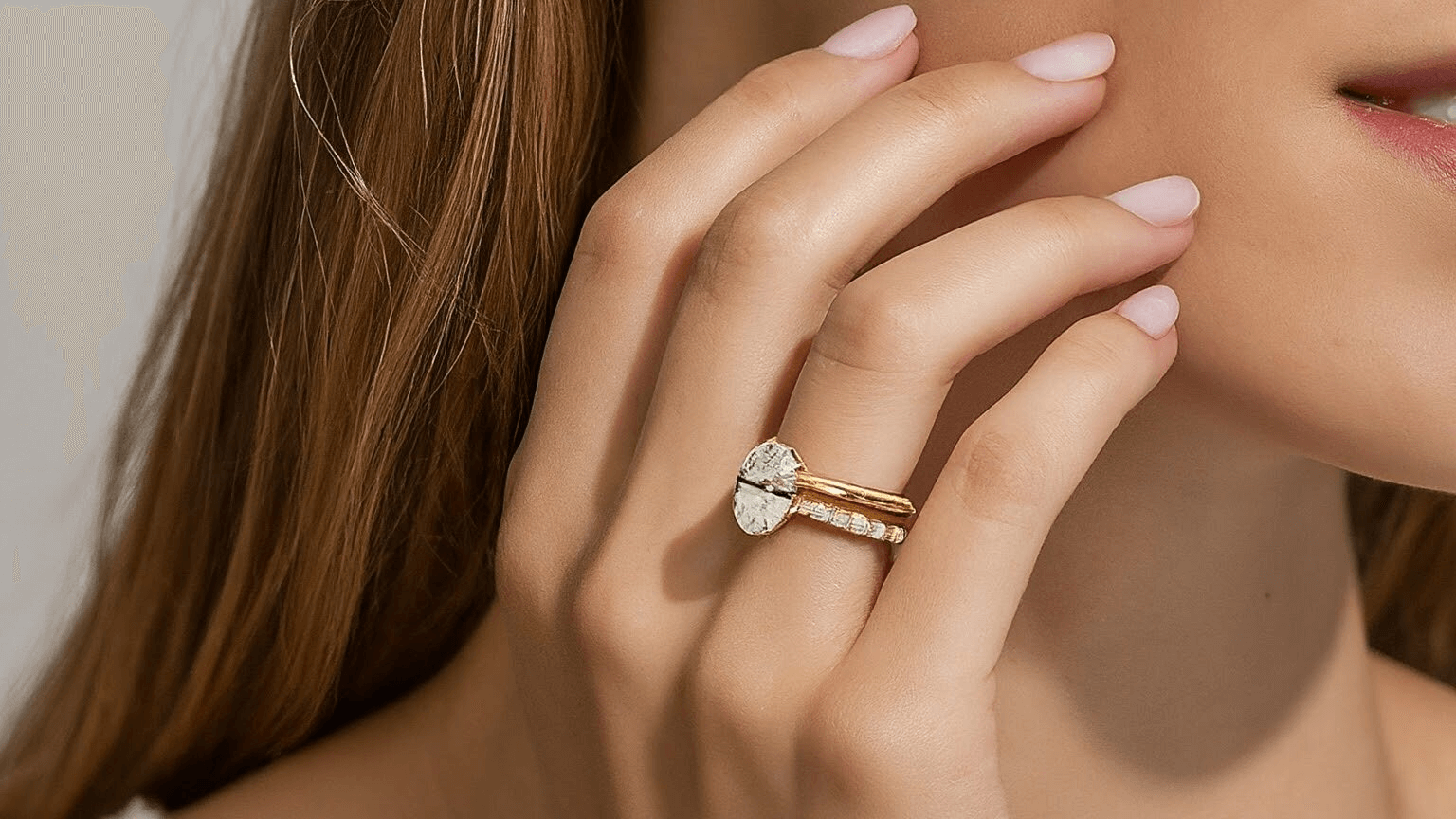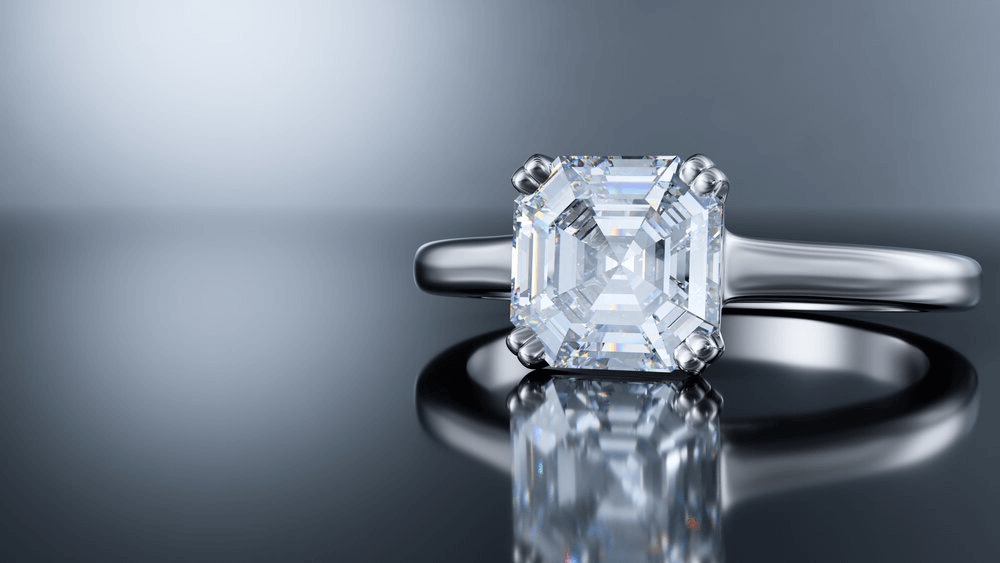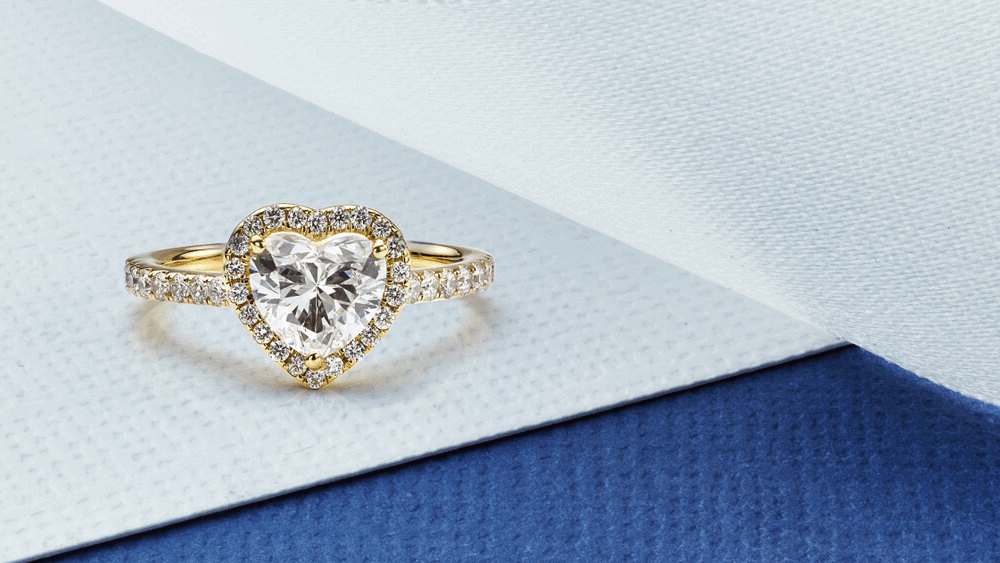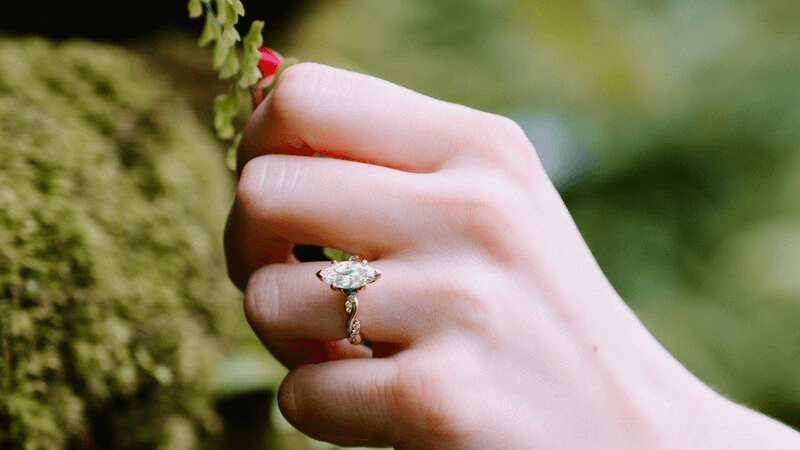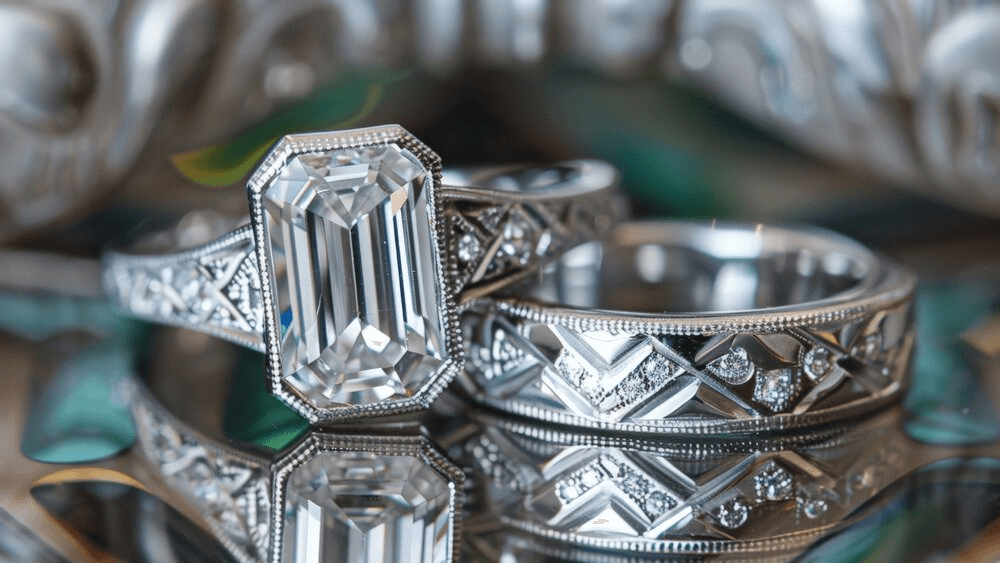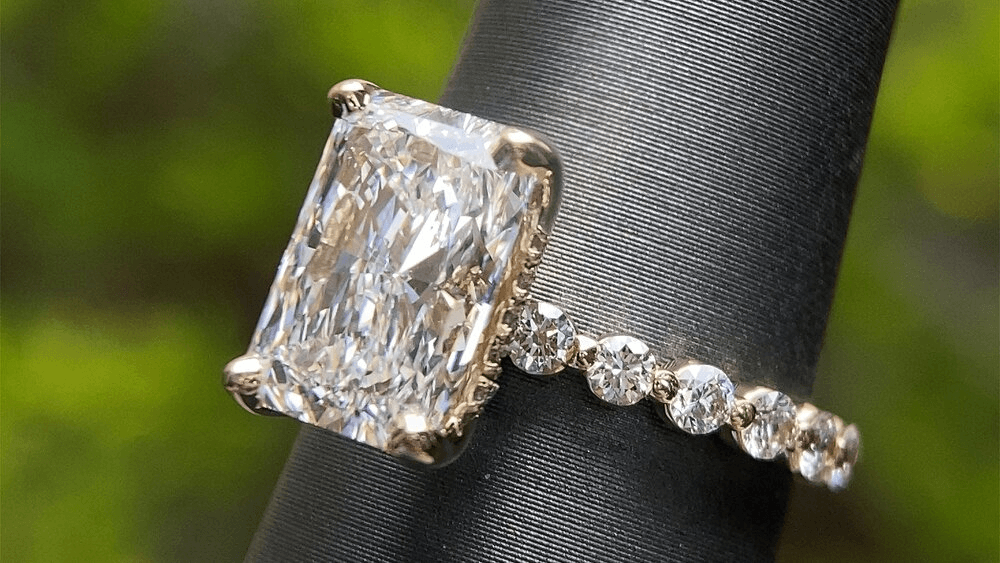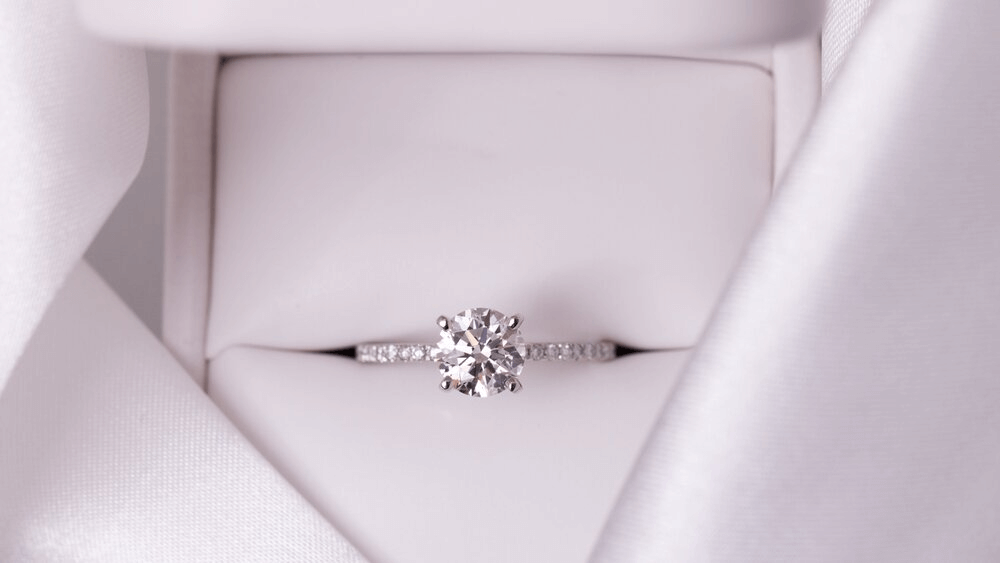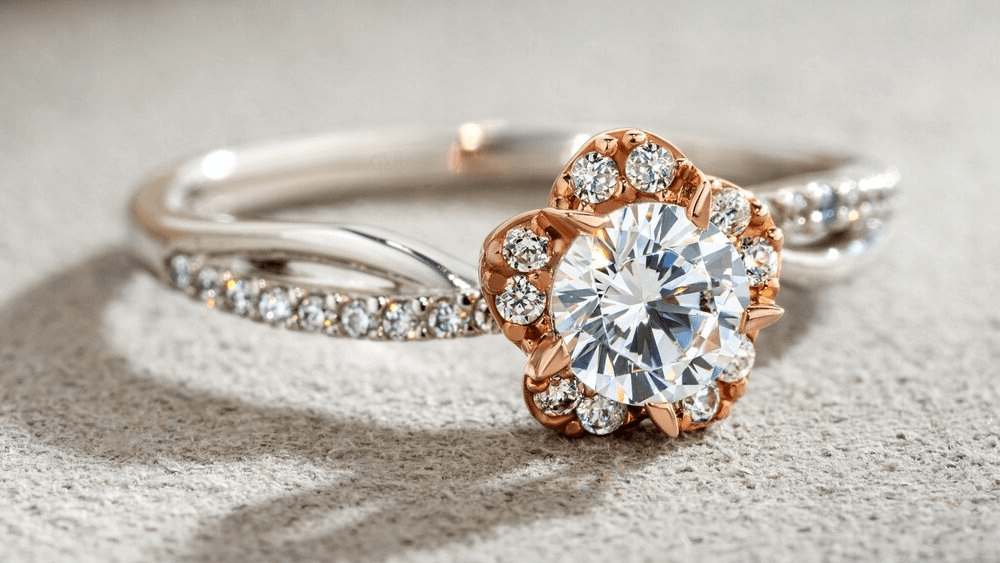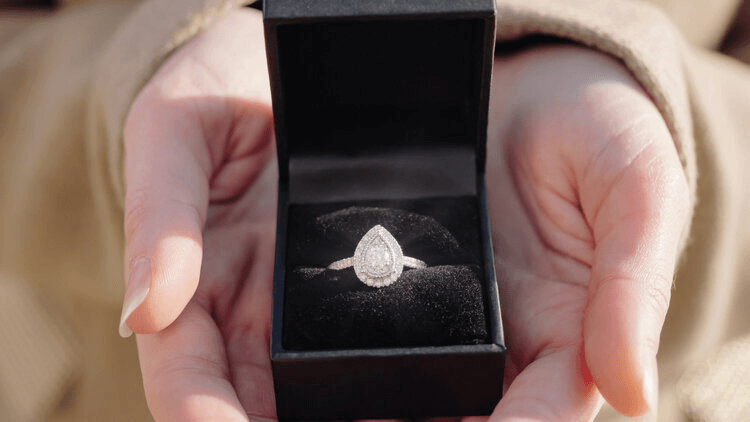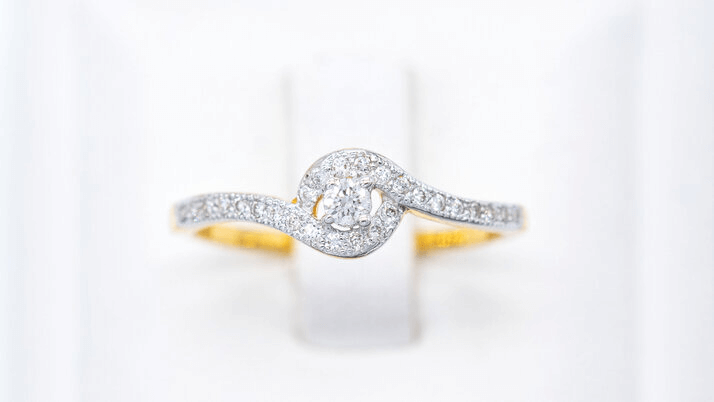4 Prongs or 6 Engagement Rings? The Shocking Truth!

By Gary A.

Edited by Olivia H.
Published Mar 12, 2022
Edited on Mar 31, 2025
When deciding between 4 prong vs 6 prong settings, it’s important to weigh both the aesthetic appeal and practical security each option brings to your engagement ring.

- 6 Quick Tips for Choosing Between 4 Prong vs 6 Prong Engagement Ring Settings
- Introduction
- Understanding Prong Settings: The Essentials
- 4 Prong Settings: The Benefits
- 6 Prong Settings: The Benefits
- How Prongs Affect Diamond Appearance
- 4 Prongs vs 6 Prongs for Diamond Security
- Our Expert Take
- 10 FAQs
Before we dive deeper into the specifics, here are some practical tips to help guide your decision-making process:
6 Quick Tips for Choosing Between 4 Prong vs 6 Prong Engagement Ring Settings
Evaluating Diamond Security Prong Number and Safety: Understand that while 6 prongs offer more security, a well-made 4 prong setting can also securely hold the diamond. Consider the diamond’s size and shape; larger or uniquely shaped diamonds might benefit from the added security of 6 prongs.
- Tip 1:Maximizing Diamond Visibility: 4 prong settings typically expose more of the diamond, potentially enhancing its brilliance and perceived size. This is especially significant for smaller diamonds where maximizing visibility is desirable.
- Tip 2:Considering the Diamond Shape: Certain diamond shapes pair better with specific prong numbers. For instance, round diamonds often look proportional with both 4 and 6 prongs, while elongated shapes like oval or marquise might be better suited to 6 prongs for added stability and protection of the pointed ends.
- Tip 3:Understanding Aesthetic Preferences: 4 prong settings often present a more modern and minimalist look, while 6 prong settings are considered classic and traditional. Your personal aesthetic preference should guide this choice, as it affects the overall appearance of the ring.
- Tip 4:Assessing Metal Type and Prong Thickness: The type of metal used for the prongs (e.g., platinum, white gold, yellow gold) not only influences the ring’s appearance but also its durability. Platinum is stronger and holds up better over time, which might allow for thinner and less obtrusive prongs.
- Tip 5:Ring’s Durability and Lifestyle Considerations: Consider your lifestyle and daily activities. If you lead an active lifestyle or work with your hands, a 6 prong setting might offer more peace of mind against snagging or accidental bumps.
- Tip 6:Maintenance and Long-term Care Regular Checks: Whichever prong setting you choose, it’s essential to have the ring regularly checked for prong wear or damage. This ensures the diamond remains securely in place over the years.
Now that you’ve got these practical tips, use Jeweler AI below to find the perfect engagement ring that suits your style and budget:
Introduction
As small as they are, the prongs on any engagement ring are the only thing keeping that diamond in place and making sure that, at the end of a long day, you aren’t going to look down and discover an empty space where that irreplaceable diamond once sat.
But, in spite of the task we entrust to them, most of us want our ring’s prongs to remain as barely visible as possible. At the hands of a skilled jeweler, a diamond can be secured in place – tightly enough that you don’t have to look down and check the back of your hand every ten minutes – with the least amount of interference from the metalwork.
Nevertheless, the option is there to add a little extra security to your ring’s design. While four prongs are often seen as the absolute minimum number required, some people naturally lean toward the reassurance (and, at times, structural beauty) that six prongs provide.
On the fence? Here’s where we stand on the 4 prong vs 6 prong debate.

Understanding Prong Settings: The Essentials
First, what exactly is a prong setting? A prong is a small piece of metal that overlaps the edge of a gemstone like a claw and holds it tightly in place.
While you can’t see it in a finished ring, the inside of a prong is marked with a small groove. Your diamond’s girdle (the thin, wide point between the crown and the pavilion) sits in that groove. Once in place, the jeweler curls the prong over the edge of the diamond.
When placed correctly, four prongs are sufficient to keep the diamond from slipping out of the setting. Even if one were taken away, the diamond could come out relatively easily.
The Role of Prongs in Ring Design and Diamond Security
Prongs can also offer protection to the more vulnerable parts of a diamond. The corners of a Princess cut, the sharp point of a Pear cut, or the two ends of a Marquise cut can chip easier than flat or rounded edges, so prongs act as a buffer for these areas.
4 Prong Settings: The Benefits
The biggest benefit to choosing a 4 prong ring is that metalwork is kept to a minimum. While the beauty of an engagement ring isn’t just down to the diamond, most of us want our diamond to be the primary focus – and, given how much they cost, we want to be able to see as much of it as possible.
Sure, two extra prongs aren’t exactly going to obscure your diamond, dull its sparkle, or make your ring look like it’s more metal than a diamond. But, for those who decide to go for 4 prongs, the crux of the argument tends to be: if we can get away with 4, why wouldn’t we?
We’re not suggesting that prongs are considered unattractive or undesirable features. And, besides, from a distance a white gold or platinum prong against a white diamond is hardly going to stand out. Even so, having more than you need isn’t a priority for many shoppers, since every prong added means more diamond removed from view.
This brings us to another benefit in favor of 4 prongs: diamonds tend to look bigger – or, in the very least, look their size.
Think about the bezel setting – an extreme example, but still relevant. The bezel covers the outer edge of the diamond’s crown, meaning that it appears smaller than it really is.
Prongs have the same effect, but the upside is that, between each prong, the true size of the diamond is clearly visible. The more prongs you add, the less of the ‘between’ you get, and the harder it is for the eye to take in the full diameter of the diamond.
Then again, there are some instances when you will find that 6 prongs are the better option…
6 Prong Settings: The Benefits
First and foremost, added security. While 4 prongs are often sufficient, some people don’t want to entrust their $5,000, $10,000, or $50,000 diamond (and all its sentimental value) to four very small pieces of metal, however skilled their jeweler may be. After all, it only takes one prong to fail for the diamond to get loose, and some of the more cautious personalities aren’t willing to take those chances.
In turn, this means that the prongs don’t need to be quite so big. We use the term ‘big’ loosely here, because the size difference is very minor – but, on the small scale of a ring, the impact of reducing the size of the prongs is significant.
Also, some people simply prefer the look of a 6 prong engagement ring. The silhouette is very striking and, for some people, sacrificing a little more of the diamond’s visibility is a worthwhile trade-off.
Some shoppers value the look of a 6 prong setting for its resemblance to the highly influential Tiffany Setting – which, as you can probably guess, was introduced and patented by the luxury jeweler Tiffany & Co, way back in the nineteenth century. There is, however, a lot more to the Tiffany Setting than 6 prongs alone, but a couple extra prongs are a nice touch for a jewelry buff.
How Prongs Affect Diamond Appearance
It depends on what you value in a ring but, generally, the 4 prong setting will make your diamond look better, simply because it leaves more of it exposed.
The light obstruction caused by two extra prongs is pretty minimal, but there is a small amount of difference in sparkle between a diamond held in place by 4 prongs, and a diamond held in place by 6 prongs.
So, that’s one count in the 4 prong ring’s favor. Another, as we mentioned above, is that 4 prong option often helps the diamond look bigger – and, for a lot of people, finding settings that make diamonds look bigger is a priority.
Also, the definition of some diamond shapes can be lost when there are too many prongs placed around the edge – particularly if they are white gold or platinum, and ‘blend’ with the diamond. This illusion will be broken on closer inspection, but it may bother some wearers more than others.

4 Prongs vs 6 Prongs for Diamond Security
A well-made 4 prong engagement ring will be safe – but not as safe as a 6 prong ring.
First things first, a good jeweler won’t let you walk out of their store with a ring that’s one good knock away from losing its diamond – or anything close to that. They understand how to keep a diamond safe for daily wear.
Some shapes are a little trickier to set with 4 prongs than others. The Marquise, for instance, is often better off with 6 prongs – one on each of the points, and two on each side. If you’re set on 4 prongs, then they may need to be a little bulkier to ensure the diamond’s safety.
But the crux of the argument is this: if you’ve chosen a reliable and experienced jeweler, and they tell you your diamond is safe in the 4 prong setting they have designed for it, then it will be safe.
Any ring – whether it features 4, 6, or 8 prongs – needs to be checked every 6 months to a year. If your jeweler identifies any weak spots, they can be fixed easily.
Also, keep in mind that a lower karat gold – such as 10K or 14K – will offer more protection than 18 karat gold, just as platinum is a more durable option than white gold.
Our Expert Take
There’s no definitive answer to the 4 prong vs 6 prong debate. For the most part, it comes down to a combination of personal preference, and the level of trust you think you can invest in these little pieces of metal.
It’s important to remember that 6 prongs, while extra safe, doesn’t have to be a case of ‘function over form’. Their smaller size and regular placement can look very elegant – almost floral, with the right embellishments on the ring’s shank.
But, at the same time, 4 prongs are safe enough, and you don’t have to give into the idea of needing 6 prongs if you don’t want to – unless, of course, your jeweler feels it’s necessary.
Essentially, this is another one of those choices that only you can make, but it certainly pays to know the advantages and disadvantages of your choice.
As always, however, making the right choice rests heavily upon your choice of jeweler. You’ll need to trust that they really will deliver on your vision for the ring. The renowned jeweler, A.Jaffe, who will set the diamond you buy from our store, has more than four and half decades of experience. They have realized designs and dreams many times, over and over. This tangible expertise and investment of time is an essential marker of trust when buying a diamond ring.
10 FAQs
- Q: Does a 4 prong setting make a diamond look bigger?
A: Yes, a 4 prong setting can make a diamond appear larger due to more of the diamond being visible, enhancing its size and brilliance. - Q: Is a 6 prong setting more secure than a 4 prong setting?
A: Generally, yes. A 6 prong setting offers more security, as it has more points of contact with the diamond, reducing the risk of it becoming loose or falling out. - Q: Can any diamond shape be set in a 4 prong setting?
A: While most diamond shapes can be set in a 4 prong setting, some shapes, like marquise or pear, might benefit from the additional security of a 6 prong setting, especially for larger sizes. - Q: Does a 6 prong setting reduce a diamond’s sparkle?
A: Slightly, as it covers more of the diamond. However, the difference is often minimal and can be a worthwhile trade-off for the added security. - Q: Are 4 prong rings suitable for daily wear?
A: Yes, a well-made 4 prong ring is suitable for daily wear. It’s important to choose a durable metal and ensure the prongs are well-maintained. - Q: Will a 6 prong setting make my diamond look smaller?
A: It can slightly reduce the visible surface area of the diamond, which might make it appear a bit smaller, but this is often a subtle effect. - Q: How do I choose between a 4 prong and a 6 prong setting?
A: Consider factors like the size and shape of your diamond, your lifestyle, and your aesthetic preferences. If security is a major concern, lean towards 6 prongs; for maximizing visibility and size, consider 4 prongs. - Q: Are there significant cost differences between 4 and 6 prong settings?
A: The cost difference is usually minimal. The choice should primarily be based on design preference and practical considerations rather than price. - Q: Can I switch from a 4 prong to a 6 prong setting later?
A: Yes, it’s possible to reset a diamond from a 4 prong to a 6 prong setting, but it requires professional jeweler assistance and may depend on the specific diamond and ring design. - Q: How often should I check the prongs on my engagement ring?
A: It’s recommended to have the prongs checked every 6-12 months by a professional to ensure they are secure and haven’t been damaged from wear.
FOLLOW-UP GUIDE SERIES





